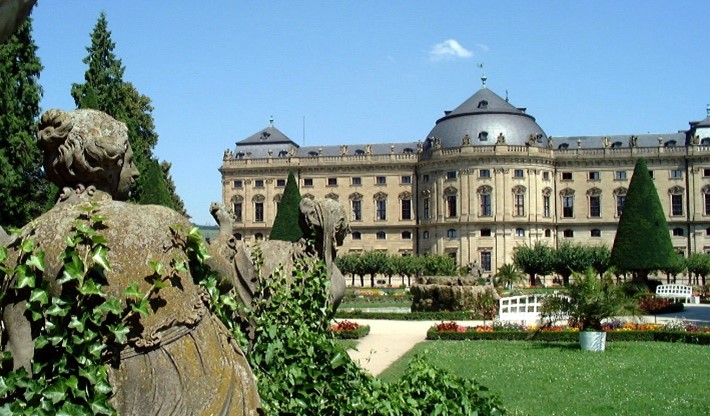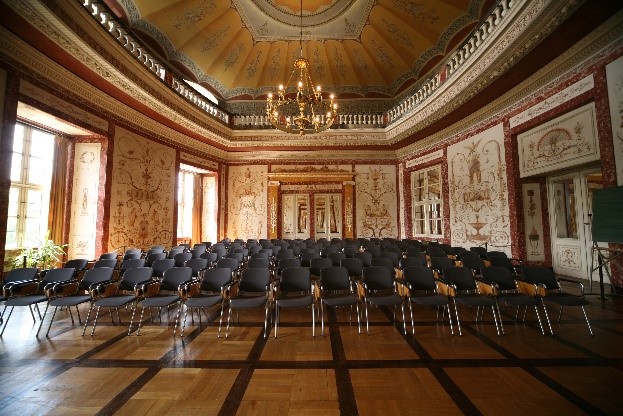WORKSHOP: Donnerstag den 12.10., 14:00-17:00
VORTRÄGE: Freitag, den 13.10., 14:00-17:00
Das Ziel mit diesem online Veranstaltungs-duett ist es, einen Einblick ins ABM zu geben mit der Möglichkeit von internationalen Expert:Innen lernen zu können (Workshop am Donnerstag, den 12. Oktober) und auch die diversen Anwendungsmöglichkeiten zu sehen (Vorträge am Freitag, den 13. Oktober). Wir hoffen, dass sie auch viele Studierende anmelden werden!
Teilnahme ist für alle, die ins AMB reinschnuppern möchten oder einfach sehen möchten, wofür man ABM benutzen kann.
Die Veranstaltung findet gemeinsam mit der CAA-NL-FL statt und wird deswegen in englischer Sprache abgehalten. Bitte beachten Sie die Anmeldefristen.
Workshop: Agent Based Modelling for Archaeologists
Termin: online am 12.10.2023, 14:00 – 17:00 Uhr, Anmeldung hier bis zum 09.10, 23:59
Instructor(s): Laura van der Knaap, Annemarie Jutte, Ronald Visser, Adam Pažout, and Doug Rocks-Macqueen
Laura van der Knaap, Education Officer, Leiden University
Laura is a recent graduate from Leiden University. During her Msc Archaeological Sciences she specialized in Digital Archaeology and wrote her thesis on the reuse of agent-based models in archaeology. Currently she is employed at Leiden University as education officer for the Agent-based modelling for Archaeologists project.
Annemarie Jutte, Researcher in the Ambient Intelligence Research Group, Saxion University of Applied Sciences
Jutte is a researcher and lecturer at the Ambient Intelligence research group of Saxion University of Applied Sciences. She has a background in computer science and mathematics and is particularly drawn to agent-based modelling because of its hands-on approach to simulating real-world events.
Ronald Visser, Senior lecturer and researcher, Saxion University of Applied Sciences
Ronald is a senior lecturer and researcher at Saxion University of Applied Sciences. He is an archaeologist with a broad specialisation in roman archaeology, dendrochronology, and computational methods. ABM is a great method to better understand archaeology and also create new ways of looking at problems, both inside and outside of archaeology.
Adam Pažout, Research Assistant in the Center for Urban Network Evolutions, Aarhus University
Adam is a research assistant in the Center for Urban Network Evolutions at Aarhus University. He is interested in Roman roads and transport networks and Roman army. He is now exploring the possibilities of ABM in modelling the Roman economy.
Doug Rocks-Macqueen, Director of Analysis, Research and Technology at Landward Research Ltd.
Doug’s PhD examined how agent based modelling could be used to improve predictive modelling. While his research interests are varied, he still has an interest in complex systems modelling and agent based modelling as a method to address the problems of complex systems.
In the last few years, simulation approaches such as agent-based modelling have become increasingly popular among archaeologists. The aim of this workshop is to provide an introduction to agent-based modelling for archaeologists who have no previous experience in building archaeological simulations. The workshop will be devoted to demonstrating the basics of modelling with NetLogo through newly developed open educational resources, developed as part of the Erasmus+ project – Agent-Based Modelling for Archaeologists. These are guided tutorials that will take you through NetLogo web and gradually help you build a simple ABM.
Participants will finish the workshop with an understanding of agent-based modelling methods and the essential functionality of NetLogo. For those familiar with the basics of Netlogo, we will provide a more advanced tutorial or some coding exercises.
Während dem Workshop werden zwei begleitende Tutorials angeboten, eins für Anfänger und eins für Fortgeschrittene, d.h. es sind keine Vorkenntnisse über ABM erforderlich.
Es ist auch keine Installation von Software erforderlich, obwohl die Verwendung von Chrome als Browser dringend empfohlen wird.
Bitte beachten Sie, dass die Anmeldefrist für den Workshop am 9. Oktober 2023 um 23:59 Uhr endet, damit die Informationen zum Workshop am 10. Oktober verschickt werden können.
Webcast: Agent Based Modelling in Action
Termin: online, am 13.10.2023, 17:00 – 19:00 Uhr. Anmeldung hier.
#1 HUMan impact on LANDscapes agent-based model: exploring interglacial vegetation changes in Europe
Presenter: Anastasia Nikulina (Leiden University)
Anastasia is a PhD candidate at Leiden University (Faculty of Archaeology, Human Origins Group) and an Early Career Researcher of the Terranova Marie Skłodowska-Curie Actions Innovative Training Network funded by the European Union’s Horizon 2020 programme. Her research primarily revolves around multidisciplinary studies, wherein she applies digital techniques such as agent-based modeling, Geographic Information Systems (GIS), and 3D modeling to study past human-environment interactions.
The focus of this research is hunter-gatherer impact on interglacial vegetation in Europe. A novel HUMLAND (HUMan impact on LANDscapes) agent-based model was developed for two primary goals: 1) to assess the differences between pollen-based reconstruction and climate-based vegetation cover obtained via dynamic global vegetation model; 2) to evaluate various factors contributing to continental-scale changes in vegetation. The findings support the hypothesis that European landscapes were significantly shaped by human activity even before the advent of agriculture.
#2 A Prehistory Dilemma: Exploring Cooperation Dynamics in the Paleolithic of Kazakhstan using Agent-Based Model
Presenter: María Coto-Sarmiento (Aarhus University)
María Coto-Sarmiento is a Postdoctoral Researcher in the Centre for Urban Network Evolutions at the Aarhus University. She is a computational archaeologist specializing in cultural dynamics in the past. Since 2023, she has been working as a postdoctoral researcher on the MINERVA Project at the University of Aarhus. Her research involves the application of computational methods to explore economic dynamics in Roman trade.
Modern humans dispersed throughout the entire world during the Pleistocene, completing an important part of our evolutionary history. Central Asia is characterised by extreme environments and therefore offers an ideal context for testing hypotheses about the role of human behavior in dispersals under adverse conditions. However, archaeological data in Central Asia is sparse, making precise reconstructions of dispersal routes and their chronology difficult.
In such cases, computational models, which provide a powerful tool for simulating behavioral scenarios in the past, will be essential to examine different possible scenarios that can be tested later with new empirical data. We introduce here an evolutionary theoretical Agent-Based Model exploring the effect of behavioral adaptations in hominin dispersals under different climate scenarios in Central Asia (Kazakhstan) during the Pleistocene. In particular, this study explores human-environment interactions where cooperation plays an important role under climate constraints. Our model
uses new survey data from archaeological sites in two different regions (the Altai and Tian Shan (Kazakhstan)) gathered during fieldwork from 2013-2022.
The model uses an evolutionary framework to test cooperation dilemmas in humans (whether to cooperate or not) using an evolutionary model proposed by Henrich and Boyd. This model analyses cooperation strategies based on two social mechanisms: a) the maintenance cost of cooperation in groups and the application of punishment to non-cooperators, and b) cultural transmission where most humans adopt common behavior (conformist transmission). These behavioral mechanisms are put to the test within four theoretical climate scenarios for each region. These are based on the average temperature (BioClim variables) during glacial and interglacial periods. The selection of these climate temperatures corresponds to the reason for testing and comparing examples of temperatures more representative (extreme and nonextreme) during the Glacial and Interglacial periods.
The main idea here is to compare how extreme climate scenarios affect human cooperation depending on the different regions and climates in which hominins are found. Therefore, the model simulates a theoretical environment where groups of humans move to find places with more resources. Meanwhile, they face climate conditions while they compete for these resources.
Preliminarily, the model shows that: a) population size can significantly influence the pressure on the group to adopt cooperative or non-cooperative behavior, such that a higher population implies more pressure to cooperate, b) cooperative behaviours could be affected by climate change, with a high probability of survival in the harshest conditions only when hominins are mostly cooperative, and c) if the initial probability of non-cooperation is higher, then human groups will tend to be non-cooperative even if a cooperative subgroup pushes them to cooperate. Our results demonstrate that the degree of cooperation influences survival during periods of extreme climatic deterioration. This may explain why Central Asia was possibly settled later than some other regions in Asia. We believe our methods and results are of interest to a wider human evolution audience and can also be used for other topics in the study of the human past.
#3 Simulation in the Age of Machine Learning
Presenter: Andreas Agourakis (Ruhr Universität Bochum)
Andreas Agourakis is a computational archaeologist with a strong background in Humanities and Social Sciences, specialising in simulating socio-ecological systems in the past. He has around ten years of experience with simulation modelling, particularly agent-based modelling, and computational data analysis to tackle meaningful theoretical questions about human behaviour and social institutions in small-scale societies and their role in the biosphere, as documented by history and archaeology.
Andreas Agourakis is a Research Associate at the Ruhr Universität Bochum.
Simulation is a methodological approach that aims to improve our knowledge about real-world phenomena through experimentation on mathematical models as similes. In contrast to other mathematical models, such as those used in statistics, simulation models are designed to reproduce patterns and trends in empirical data not directly but as outcomes of postulated mechanisms under controlled conditions. While other mathematical models may involve explanations, the conjecture of causality remains outside the model formulation and will be used solely to justify or interpret their formal design. Simulation models, on the other hand, are themselves formal definitions of causal relationships, sitting in-between datasets and theory. In this sense, the many varieties of simulation are often referred to as process-based or explanatory modelling, in contrast to approaches that are data-based or descriptive, among which machine learning (ML) is currently the most promising. In terms of practice, simulation modellers take on different tasks than those of data scientists, as the workflow of the former requires a model to be defined with precision, and then explored for a wide range of inputs and outputs, whereas the latter demand that the input and output are given to define a model.
The digitalisation of statistics and the increasing computational complexity in data science has pushed simulation modelling to become a rather separate and somewhat niche community of practice. In some circles and disciplines, simulation is even regarded as a lesser and weaker methodology, given its relative freedom towards empirical data (Winsberg 2010). However, once the differences between simulation and statistical inference are well understood, together with their strengths and limits, we can go beyond the misperception of methodological opposition.
Regarding ML, there are many opportunities for exchange and combination that hold the potential for revolutionising our approach to scientific problems (von Rueden et al. 2020). The aim of this paper is to raise awareness of the possibilities explored or still to explore, organising them according to their role in both simulation and ML workflows, and showcasing a selection of examples of applications in archaeology and beyond.
These are not only promising for simulation and ML studies separately but carry the possibility of inaugurating a new scientific methodology, able to treat complex problems that otherwise would have been avoided as intractable or even unsolvable. As the simulation of social and socio-ecological processes are applied to archaeology and history, such a revolution could in fact make of this approach, if not a time machine, something perhaps better: a what-if machine, informed by both consolidated human knowledge and the data of numerous generations of humans in the past. The benefits of artificial intelligence to the achievement of the UN Global Goals remain to this day mainly instrumental, as an approach that generally makes certain analytical processes more effective and faster. That is because of the characteristic semantic void behind the mathematical formulation of ML so far. However, the further combination with simulation may be able to fill this gap in the near future, helping the more conscious exploration of the solution space lying beyond the immediate imagination of current societies.



